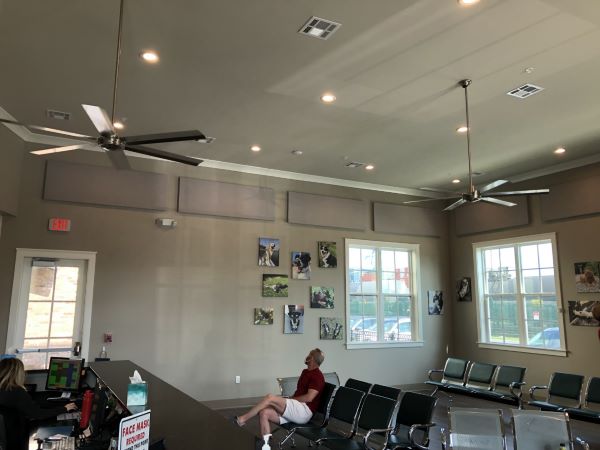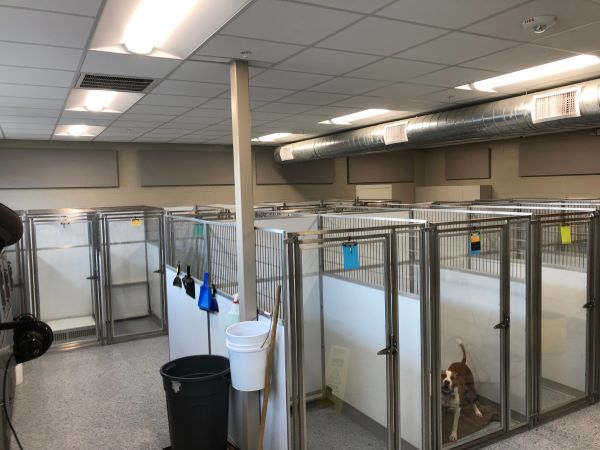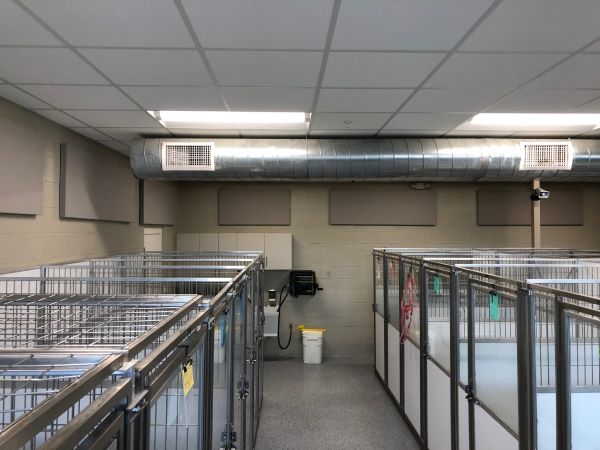Vet offices, doggie daycares, and puppy grooming services all have one problem in common. All of them need to find economical and effective ways to reduce noise created by pets and their owners. As any canine owner knows, dogs make a lot of noise. And, if you’ve ever been to a vet’s office or doggy daycare, you know how loud it can get when the dogs start barking.
Learn More: When to Use Sound Absorbing Panels
Why Acoustically Treat a Veterinarians Office?
Whether it’s barking at the other dogs, barking at other people, or barking at a gentle breeze, noises from veterinary establishments can be extremely troublesome for the vets, vet technicians, pet owners, and of course the dogs. Dog barks are often extremely loud and low frequency (especially larger dogs).

In this particular veterinarian office, the interior finishes were hard flooring and drywall walls & ceilings. Because of this, sound from barking dogs seemed even louder because it was reverberating off all of the hard surfaces, and creating bad echo. There was also exterior train noise leaking in that added to the noisy environment.
Veterinary Office Noise Reduction – Scope of Work
In order to reduce reverb time and noise within the vet clinic, our team fabricated and installed acoustic wall panels in the lobby to reduce echo for the customers, their pets, and the front desk staff.
In the dog kennel area there were painted CMU walls and a tremendous amount of echo even with a low ceiling of existing ACT. Our team upgraded each ceiling tile to 0.90 NRC Armstrong Optima tiles (upgraded from 0.50 NRC existing). We also added evenly spaced wall panels along the CMU walls.
Our install crew also added high NRC ceiling tiles onto the ceiling grid, to further dampen sound within the space.

Benefits of Acoustic Treatment & Soundproofing in Veterinary Offices
By combining acoustic wall panels with a the new ACT, Commercial Acoustics was able to significantly reduce reverb time in the veterinarian office. Whether trying to stop animal noise or other disruptive sounds, consider using acoustic wall panels and high NRC acoustic ceiling tile to reduce echo and reverberation.

